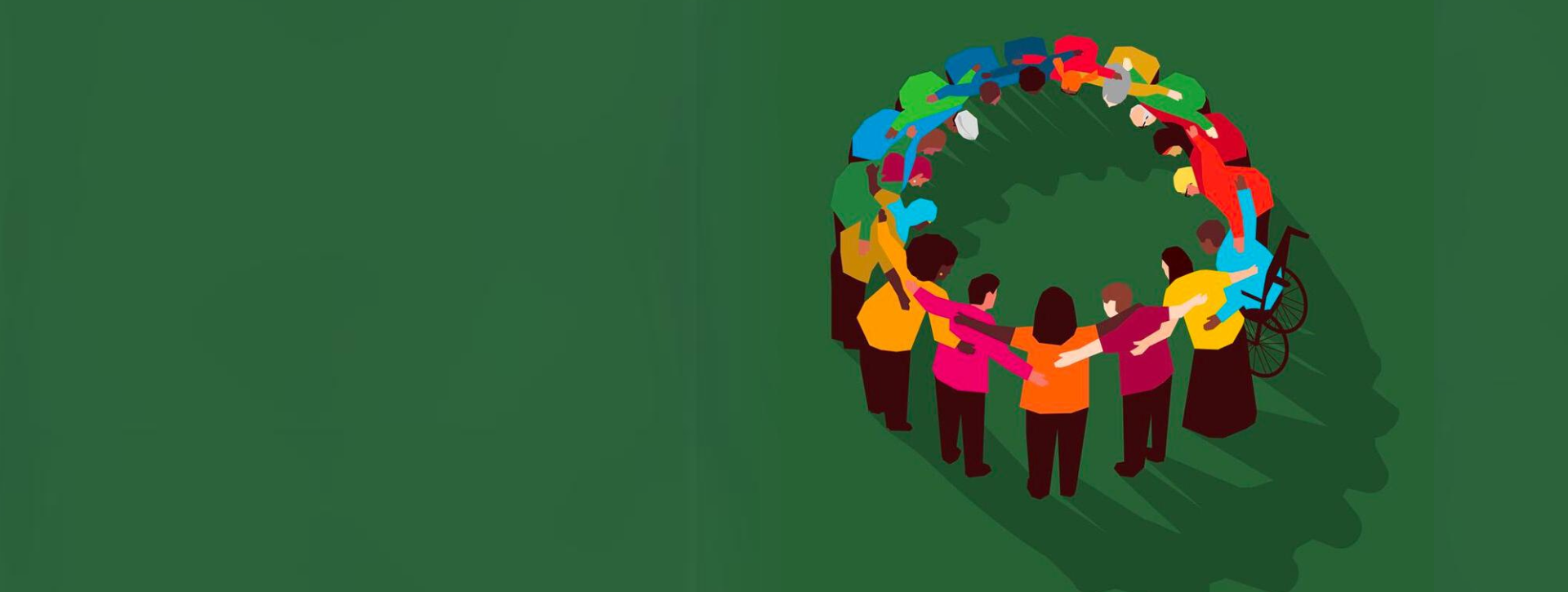Let’s play a guessing game. Here are a few questions about the state of our world. As a practitioner in strategic design, behaviour change, innovation and more, your perspective is important. What do you think the right answer is?[1]
Firstly, how much of the world’s plastic ends up in the ocean?
- Less than 6%
- Around 36%
- More than 66%
Secondly, in 1980, roughly 40% of the world’s population lived in extreme poverty, with less than $2 per day. What is the share today?
- 10%
- 30%
- 50%
And lastly, how many people in the world have some access to electricity?
- Around 30%
- Around 60%
- Around 90%

How did you go? More often than not, people answer these questions incorrectly. For question 2 alone, more than 90% of people answer incorrectly. In fact, most people answer these questions at the farthest extreme from the correct answer – usually, this means most of us assume the worst about the state of the world and are surprised to learn that some things are better off than they seem.
Applying behavioural science to this, we might infer that pessimism bias is decidedly at work. Pessimism bias refers to the tendency to overestimate the likelihood of negative events compared to positive events. Evolutionarily speaking, homo sapiens have always had to maintain a certain degree of risk avoidance and proactive aggression in order to survive in the midst of other threats. In the case of the above questions, there is probably a multitude of compounding factors contributing to our pessimistic worldview. The onslaught of misinformation in recent decades, the wake of a global pandemic, climate change highlighting a chain reaction of degradative effects, and sociopolitical movements embracing nostalgia for a time long gone, to name a few – these all contribute to a pervasive sense of malaise with respect to human progress. Factor in pervasive confirmation bias and the availability heuristic , and well, we may begin to feel that our disenchantment is entirely rational.
With this as our backdrop, commitments like the UN Sustainable Development Goals (SDGs) can seem intimidatingly ambitious and worse, altogether quixotic. It is this bold level of ambition, however, that speaks to us here at ThinkPlace. We have taken up these 17 goals as our North Star. They guide everything that we do, underpinning our strategy, the fine filter we have when taking on project work and the talent and culture we invest in internally.

2023 marks the halfway point to the SDGs. The goals were launched on 1 January 2016 after being signed off on by all UN members in a historic UN Summit in 2015. The 17 goals were set to be achieved by 2030 under the rallying cry “leave no one behind and reach the furthest behind first.” Building on momentum created by the (precedent-setting yet unrealised) Millennium Development Goals, which focused primarily on a world without poverty, the SDGs represent the guiding framework for a more sustainable global future. Referred to as the World’s To-Do List, they are a guide to tackling the interconnected crises of climate change, COVID, conflict, poverty and inequality.
Being that we stand at the midway point in this journey, a de facto town square has quickly emerged to interrogate our global progress toward these goals – and effectively, challenge the validity of our pursuit toward them. Understandably, being at the midway point also means that the very timeline of the SDGs is coming under great scrutiny.[2] While progress has been made in many key areas over the last seven years, the overarching conclusion appears to be that the rate of change is simply not fast enough to meet our 2030 deadline.
Still, most audiences remain interested in the higher-order question of this journey: how well are we doing? Or put differently, how much good has been done in the last seven years? The UN itself published a progress report earlier this year to capture the advancements and take stock of where greater efforts are needed.[3] The report stated that about half of the countries with sufficient data had had “moderate or severe” deviations from the intended trajectory since 2015. These deviations include increases in the number of refugees in some countries, a resurgence of fossil fuel subsidies and more.[4]
The SDG Summit held in September of this year recognised that only 15 percent of the goals are on track to be achieved by 2030.
Due to the scale of ambition baked into these goals, in some ways, it is not surprising that we are not on track – and most importantly, this does not mean that the SDGs themselves are a failure or that our aspirations are unfounded nor misdirected. On the contrary, real progress has been made that should not be discounted. Here are a few highlights:
- Health:
- Stunting has declined from 24.6 percent of kids affected to 22.3 percent worldwide
- Infant mortality (under five years old) fell from 4.3 to 3.8 percent of those born worldwide
- HIV incidence has fallen by 27 percent
- Gender equity:
- The percentage of women in the world’s parliaments climbed from 22 to 27 percent. Regarding sustainability, the share of renewable energy climbed from below 17 to above 19 percent
- Education:
- Upper-secondary school completion rates have risen from 53 to 58 percent
- Water, sanitation and hygiene:
- Access to improved sanitation has increased from 73 to 81 percent of the world’s population
- The proportion of the world practising open defecation has fallen from 10 to 5 percent
- Access to electricity has risen from 87 to 91 percent
- Economic development:
- In just a seven-year period, one in seven of the world’s population gained access to a bank account[5]
However optimistically or pessimistically you may view the world’s progress toward the SDGs, it is clear that the halfway mark has brought the goals into focus within our mind’s eye and forced us to confront how our own efforts are contributing to their achievement. The UK Government, for instance, has called upon the wealth of insurance firms, pension funds, and private investors in the City of London to pioneer an unconventional approach to achieving its part of the SDGs. The IKEA Foundation has been taking stock of the impactful work of its partners in relation to the SDGs 1, 2, 7, 12 and 13. Countries are being urged to recommit to the SDGs by revising their national strategies. Mechanisms like the SDG Stimulus are trying to close the financial gap to achieve these goals and may help to accelerate progress toward 2030. Through its sports-themed Halftime Campaign, the UN Office for Partnerships is leveraging social media to re-energise support for the goals through the hashtag slogan: #ImagineWinning. And just to make sure everyone’s covered, there’s even a Lazy Person’s Guide to Saving the World which provides recommended actions to take from the comfort of your couch.

Image caption: Imagine Winning campaign
At the top of this article, I mentioned that your perspective is important. Indeed, it is. No matter what role you play within the ecosystem of human progress, you are needed. Correcting our pessimistic worldview is important because our outlook and our tone have tremendous influence whether that influence is visible or not.
Your voice is powerful enough to give people hope and inspire creative action toward these goals, and yet it is also powerful enough to do the opposite.
Updating your worldview is no one-off task. It’s a practice. To learn more about how to reframe our progress toward the SDGs, check out Gapminder’s work here. To test your knowledge specifically on the global progress toward the UN SDGs, refer to the quizzes here. The official list of all UN SDG indicators and tracking of those indicators can be found here.
Lastly, for anyone looking for further resources to boost your optimism about our capacity for progress toward the SDGs, check out:
- The Bill & Melinda Gates Foundation Newsletter, entitled The Optimist, is released once a week and can be subscribed to here.
- Steven Pinker’s book Enlightenment Now makes the incontrovertible case that we should celebrate the enormous strides made in human wellbeing (citing things like the fact that humans are living longer than ever before, with less disease and with less threats on their safety).
- The Idiot’s Guide to Saving the World podcast gives inspiring tips and evidence about how to get more actively involved in the SDG journey.
- An insightful Stanford Social Innovation Review article about “Putting the SDGs Back on Track,” written this year

Image caption: The Idiot’s Guide to Saving the World
Correct Answers
- Question 1: Less than 6% of the world’s plastic ends up in the ocean.
- Question 2: Today, around 10% of the world’s population live in extreme poverty. It’s difficult to accept that the extreme poverty rate declined faster than ever, while global inequalities at the same time became wider than ever. While COVID has impacted this statistic slightly (sending many more people back into poverty), the trend remains upwardly oriented.
- Question 3: 90% of people have access to electricity and getting that figure to 100% is no longer just part of our imagination. Unfortunately, too, access does not mean that households have power all day. Many countries still rely on scheduled power outages (shedding) to support energy conservation.
References
[1] All questions and answers are from Gapminder.com
[2] “The U.N. plan to improve the world by 2030 is failing. Does that make it a failure?” Igoe, Michael. 21 September 2023.
https://www.npr.org/sections/goatsandsoda/2023/09/21/1200693989/the-u-n-plan-to-improve-the-world-by-2030-is-failing-does-that-make-it-a-failure
[3] It should be noted that some of the countries in question did not have sufficient data or data of sufficient quality with which to properly evaluate their progress.
[4] “Halfway to 2030: The Sustainable Development Goals”. Loft, Philip and Brien, Philip. 14 September 2023.
https://commonslibrary.parliament.uk/halfway-to-2030-the-sustainable-development-goals/
[5]“Halfway to the SDG Deadline, We’re Not Halfways to the SDGs.” Kenny, Charles. 30 August 2023. https://www.cgdev.org/blog/halfway-sdg-deadline-were-not-halfway-sdgs

